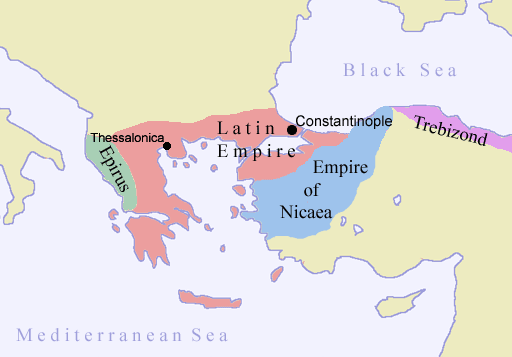
745 years ago today (July 25, 1261) the Empire of Romania, the attempted Catholic successor-state to Byzantium, the Eastern Roman Empire, fell to Michael VII Palaiologos.
In 1204 merchants in Venice convinced Crusaders on their way to the Holy Land to attack Constantinople instead of the Arabs. The Flanders-lead assault succeeded in bringing down the remains of the Roman Empire which split into the Empires of Nicaea, Epirus, and Trebizond.
After years of fighting the Greeks of Nicaea were able to defeat the invaders and restore the Byzantine Empire. The Greeks threw out the bodies of Crusaders buried in Saint Sophia (I cannot really blame them).
In a twist of irony Michael VII's rise to emperor restarted the fall of the empire. He withdrew troops from Asia Minor to fight wars of reunification in Greece and against the Bulgarians. The lack of troops on his east flank allowed the Arabs to conquer more territory. Michael also refused to reform the government and bureaucracy of the empire which the term “byzantine” (number 4) comes from.
The Turks took Constantinople and the empire in 1453 and advanced all the way to the Gates of Vienna in 1683 before being pushed back ever so slowly to modern borders.
Category: Historical Geography

No comments:
Post a Comment